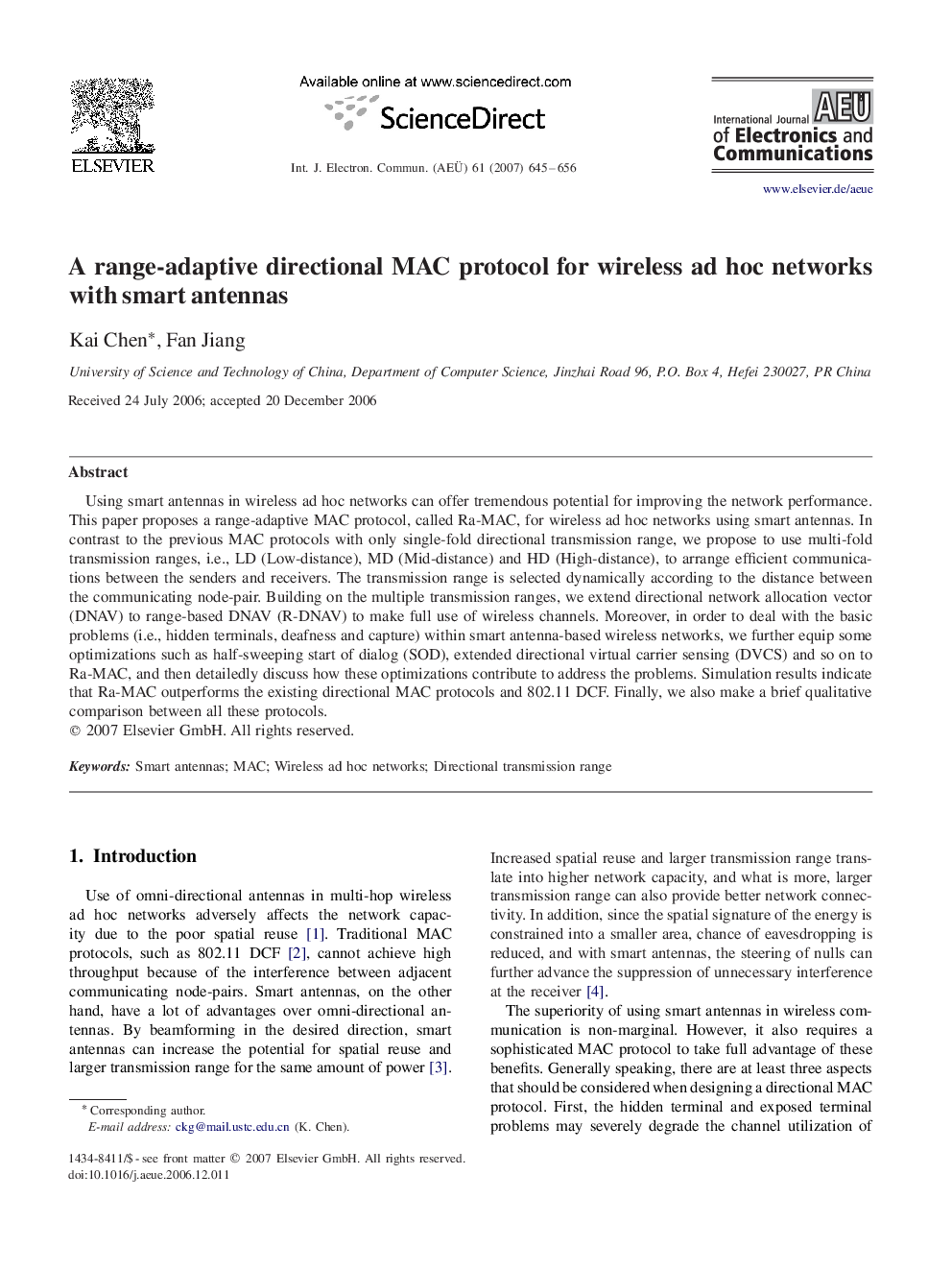| Article ID | Journal | Published Year | Pages | File Type |
|---|---|---|---|---|
| 449559 | AEU - International Journal of Electronics and Communications | 2007 | 12 Pages |
Using smart antennas in wireless ad hoc networks can offer tremendous potential for improving the network performance. This paper proposes a range-adaptive MAC protocol, called Ra-MAC, for wireless ad hoc networks using smart antennas. In contrast to the previous MAC protocols with only single-fold directional transmission range, we propose to use multi-fold transmission ranges, i.e., LD (Low-distance), MD (Mid-distance) and HD (High-distance), to arrange efficient communications between the senders and receivers. The transmission range is selected dynamically according to the distance between the communicating node-pair. Building on the multiple transmission ranges, we extend directional network allocation vector (DNAV) to range-based DNAV (R-DNAV) to make full use of wireless channels. Moreover, in order to deal with the basic problems (i.e., hidden terminals, deafness and capture) within smart antenna-based wireless networks, we further equip some optimizations such as half-sweeping start of dialog (SOD), extended directional virtual carrier sensing (DVCS) and so on to Ra-MAC, and then detailedly discuss how these optimizations contribute to address the problems. Simulation results indicate that Ra-MAC outperforms the existing directional MAC protocols and 802.11 DCF. Finally, we also make a brief qualitative comparison between all these protocols.
